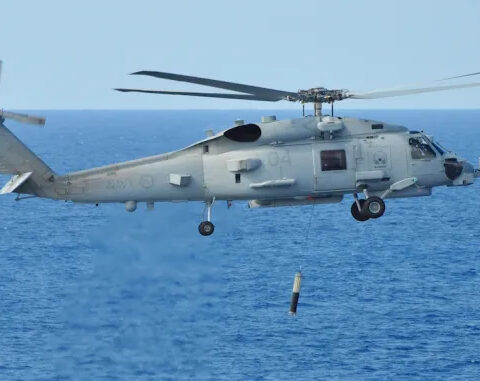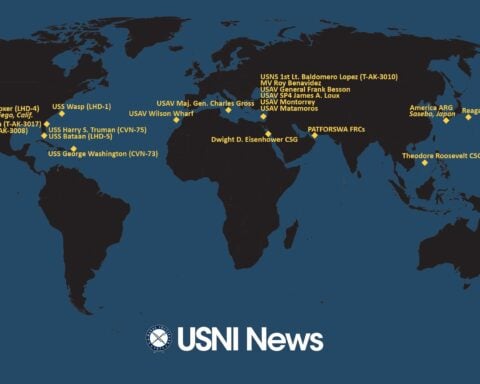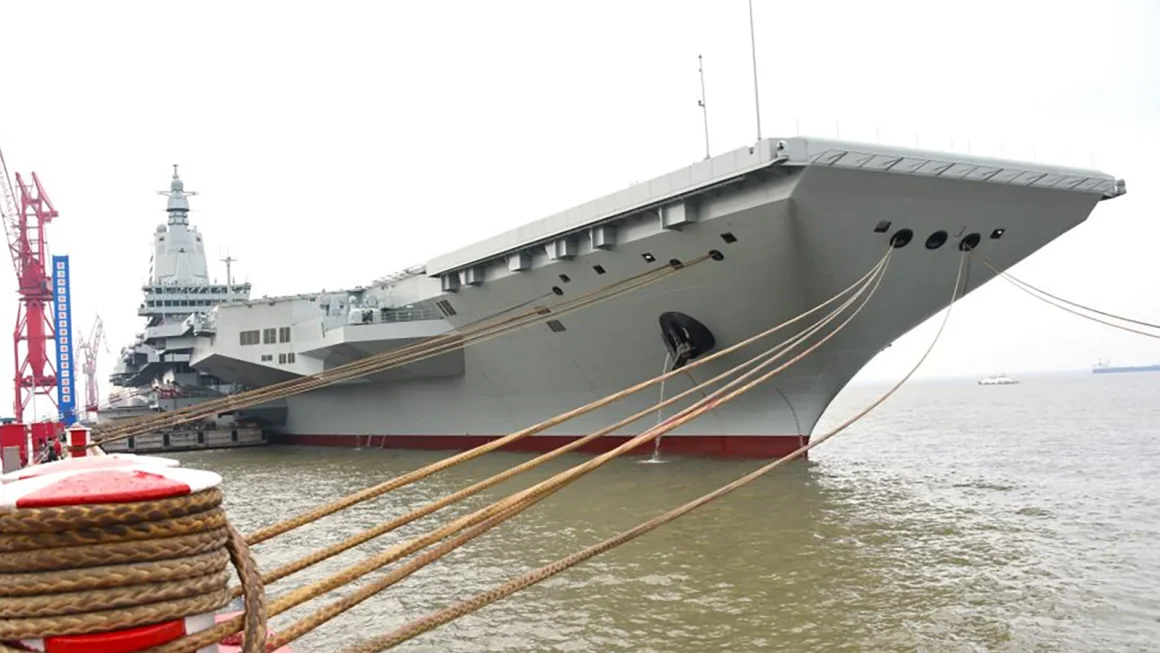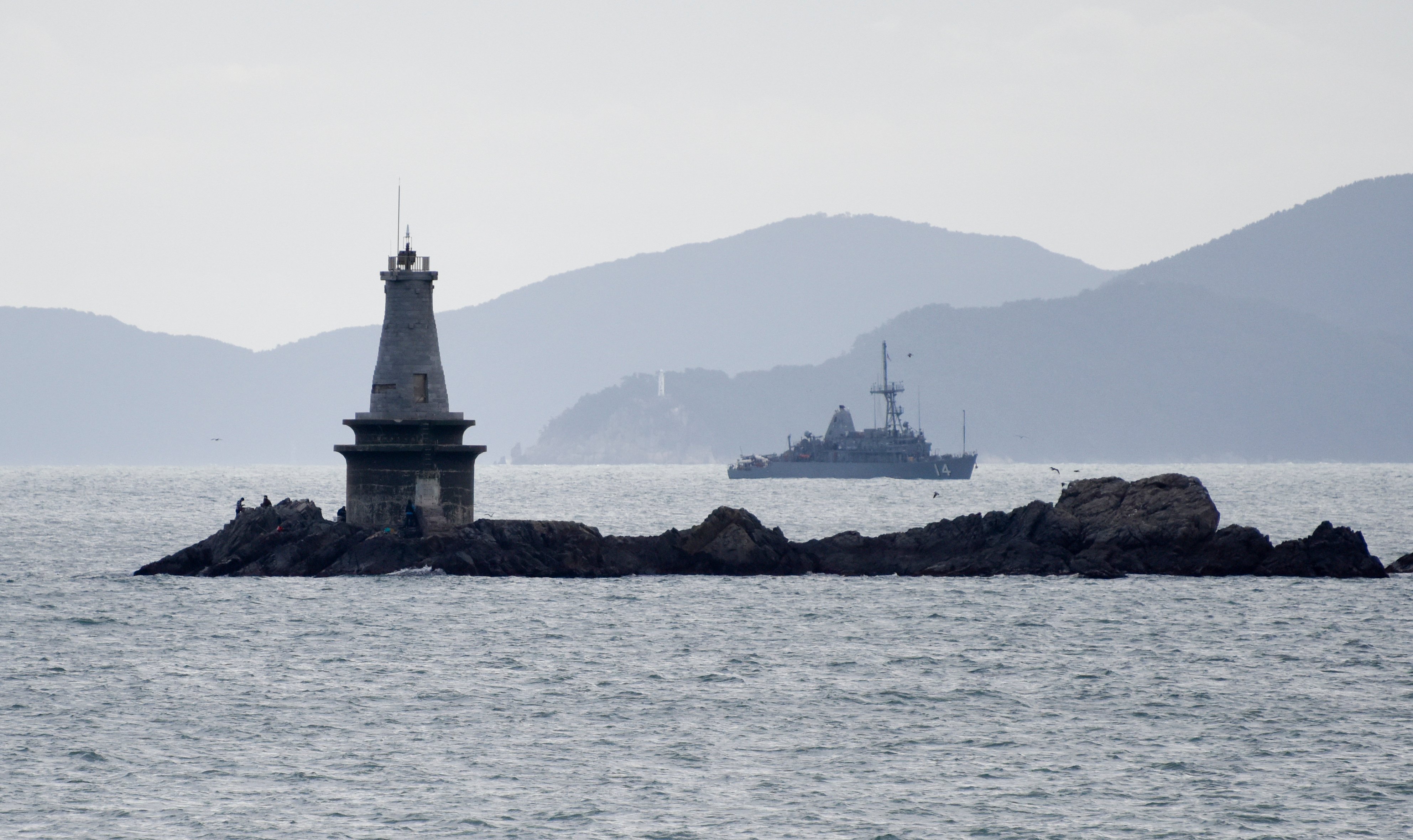
THE PENTAGON – The Navy’s mine warfare community is putting together a comprehensive plan to lay out the investments required for a successful transition from legacy mine countermeasures systems to more advanced capabilities.
The early-1980s Avenger-class MCM ships and the mid-1980s MH-53E Sea Dragon helicopters will be on their way out next decade, and a mix-and-match system of sensors, offboard vehicles and platforms will take over the mission. Though Navy leaders knew the transition was coming – and though it’s been pushed back due to delays in developing capabilities within the Littoral Combat Ship (LCS) program – decisions related to retiring the legacy systems have now come into the near-term planning window for the service, requiring a coordinated path forward on the transition.
Maj. Gen. David Coffman, director of expeditionary warfare on the chief of naval operations’ staff (OPNAV N95), told reporters today that he and Program Executive Officer for Unmanned and Small Combatants Rear Adm. John Neagley are in the process of working with the Naval Board, U.S. Fleet Forces Command and other operators, congressional committees and other stakeholders to go over the current transition plan and address any concerns about risk or cost.
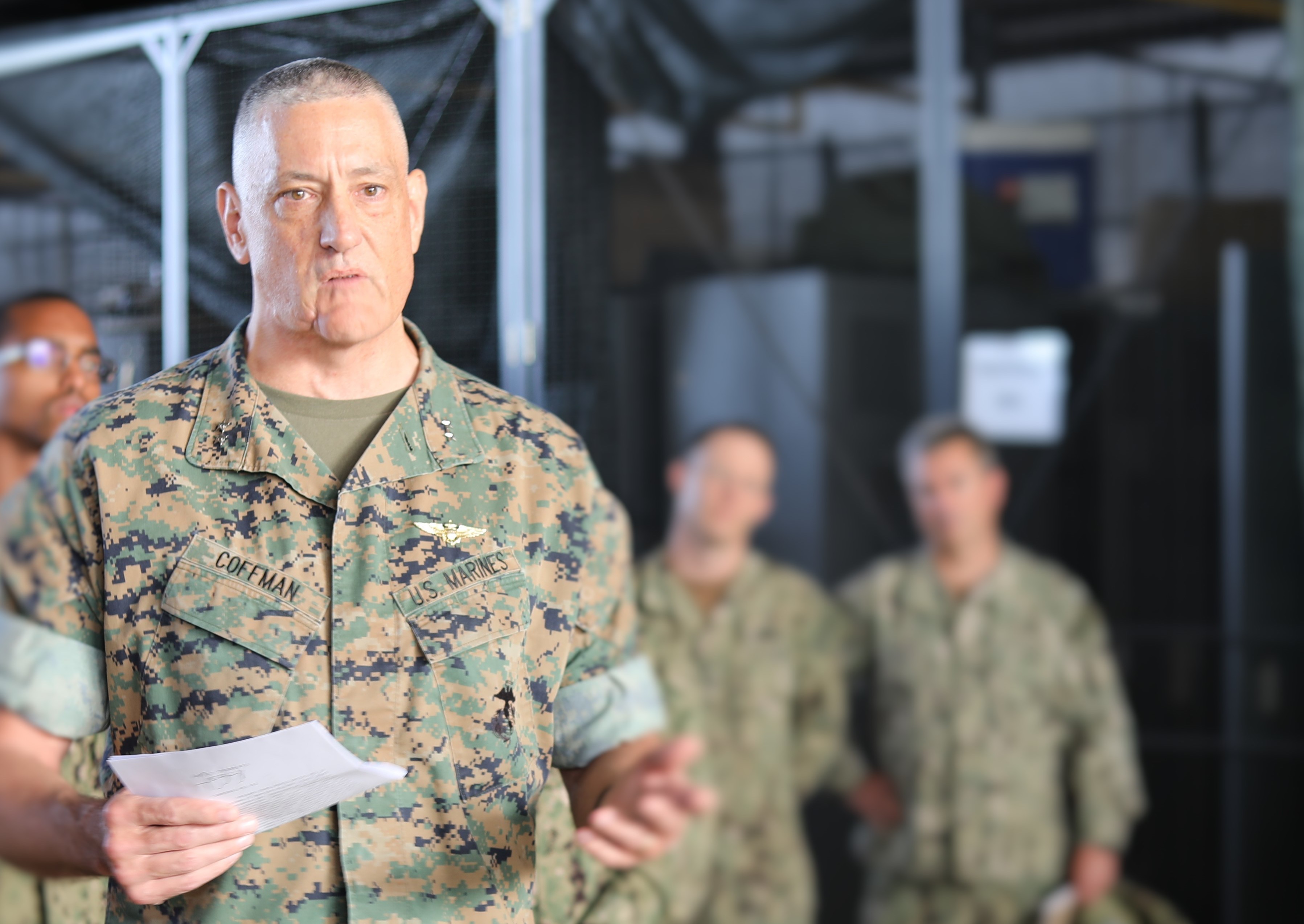
“We have to explain the pathway of how we’re going to do what we need to do in 7th, 6th and 5th Fleet. And it’s not going to be – in some future, at some point – it’s not going to be with a wooden MCM ship that’s going to go into the minefield and either drop a sonar or drag a mechanical (sweep) or neutralizers. It’s not going to be with a 53,” Coffman said.
“It’s going to be with that lineup I gave you: new sensors, capabilities; applied in a variety of air, surface and undersea; manned and unmanned; based off of shore, vessels of opportunity, [Expeditionary Sea Bases], LCSs, et cetera. So that is a big part of the discussion.”
A key challenge for Coffman is that the new systems don’t replace legacy ones in a one-for-one manner. They attack the same problem from a different angle, applying unmanned systems to keep sailors farther from the mines in some cases, using artificial intelligence and big data technologies to help sift through search data faster, and working towards a “single sortie” vision where the entire MCM apparatus could search waterways, identify an item out of the ordinary, classify what type of mine it is, and then neutralize the threat – all in real time.
“We get caught a lot in a, is this better than that? And the congressional language that talks about the legacy – again, it’s their job, I don’t fault that – but it’s more complex than, you can retire the legacy when the new stuff does this. Well, the new stuff does not do mine warfare in the same way the legacy does mine warfare,” Coffman said.
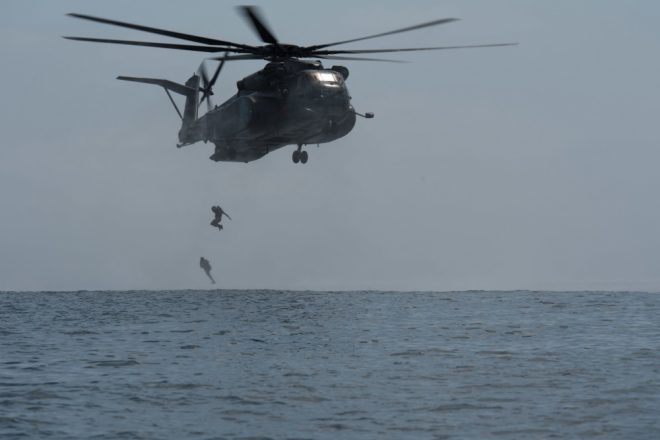
Mechanical minesweeping is a good example, he said. Avenger-class MCMs excel at this, and the MH-53s have a pole that can drop into the water as a mechanical sweep as well, cutting moored mines from their tethers and allowing them to float to the surface to be neutralized.
“We judged that for the future force, the current proposition is, we’re not going to do that kind of minesweeping,” Coffman said.
“There’s nothing in the inventory that’s going to do the thing the way – same thing for the mechanical pole in the MH-53. The bet is that we’re not going to do it that way,” and therefore Navy leaders and lawmakers can’t insist on stalling the transition until all the MCMs’ and MH-53s’ capabilities are replicated in the new equipment.
At the moment, in crafting this transition plan, “we are duking it out now in terms of what are the best and wisest timelines, because we are up against doing specific things to track towards sundown” of the legacy systems, Coffman said.
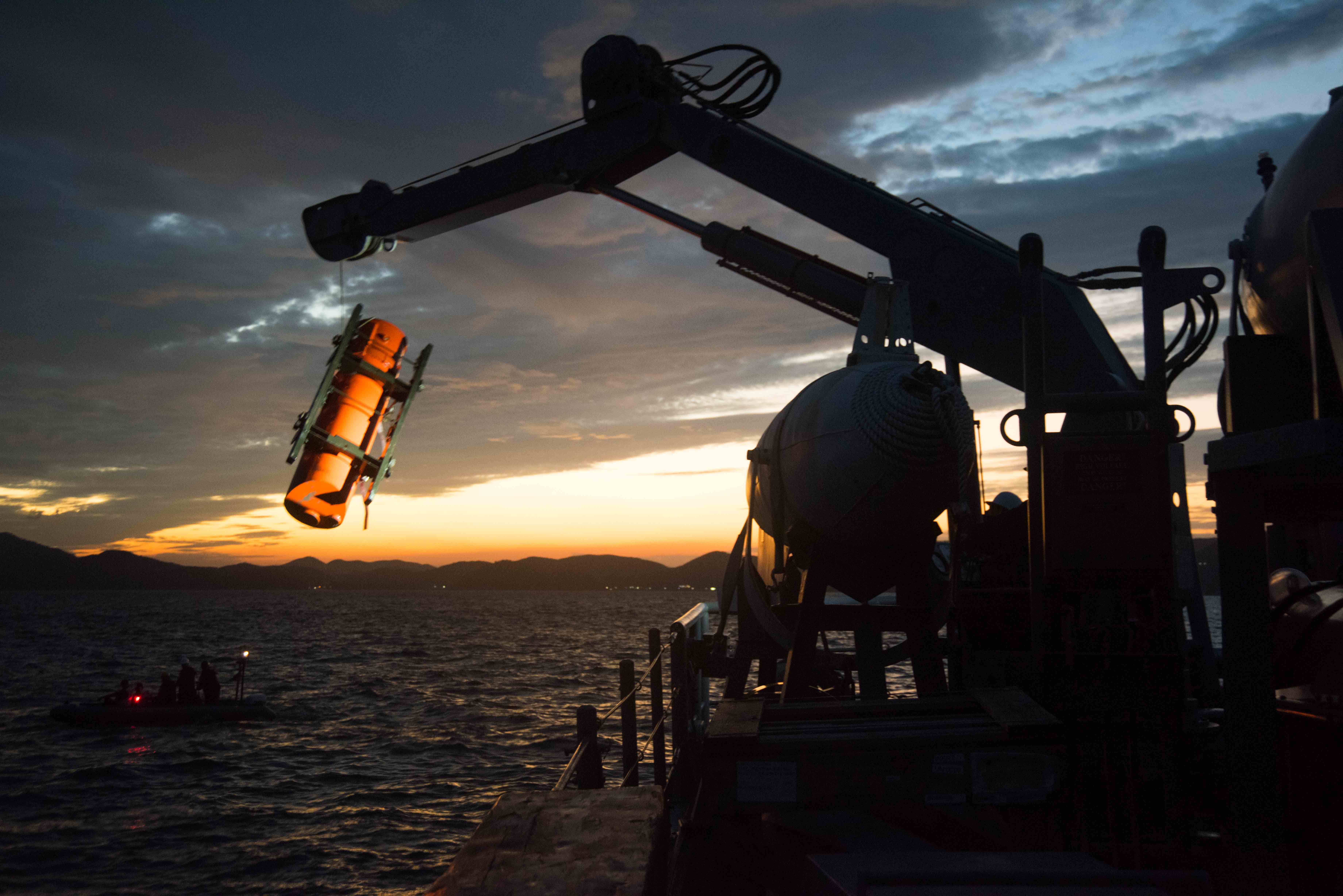
In the coming months, Coffman and the rest of the group will present to the Naval Board to loop in Navy and Marine Corps leaders, as well as worth with U.S. Fleet Forces Command commander Adm. Chris Grady to bring in the operators and their perspectives. At the same time, congressional committees are being briefed to explain the plan and gauge their willingness to take risk – with only so much money available, the more money that’s spent on the legacy systems, the less there may be to accelerate development of the new systems.
“They are correctly very interested in protecting capability in terms of, they’ve got to fight now. So that’s an important part of this is to dialogue with the fleet … to understand, they are the articulators of risk to the [chief of naval operations] on these pathways – that’s Adm. Grady’s job – so we want to help him with that,” Coffman said.
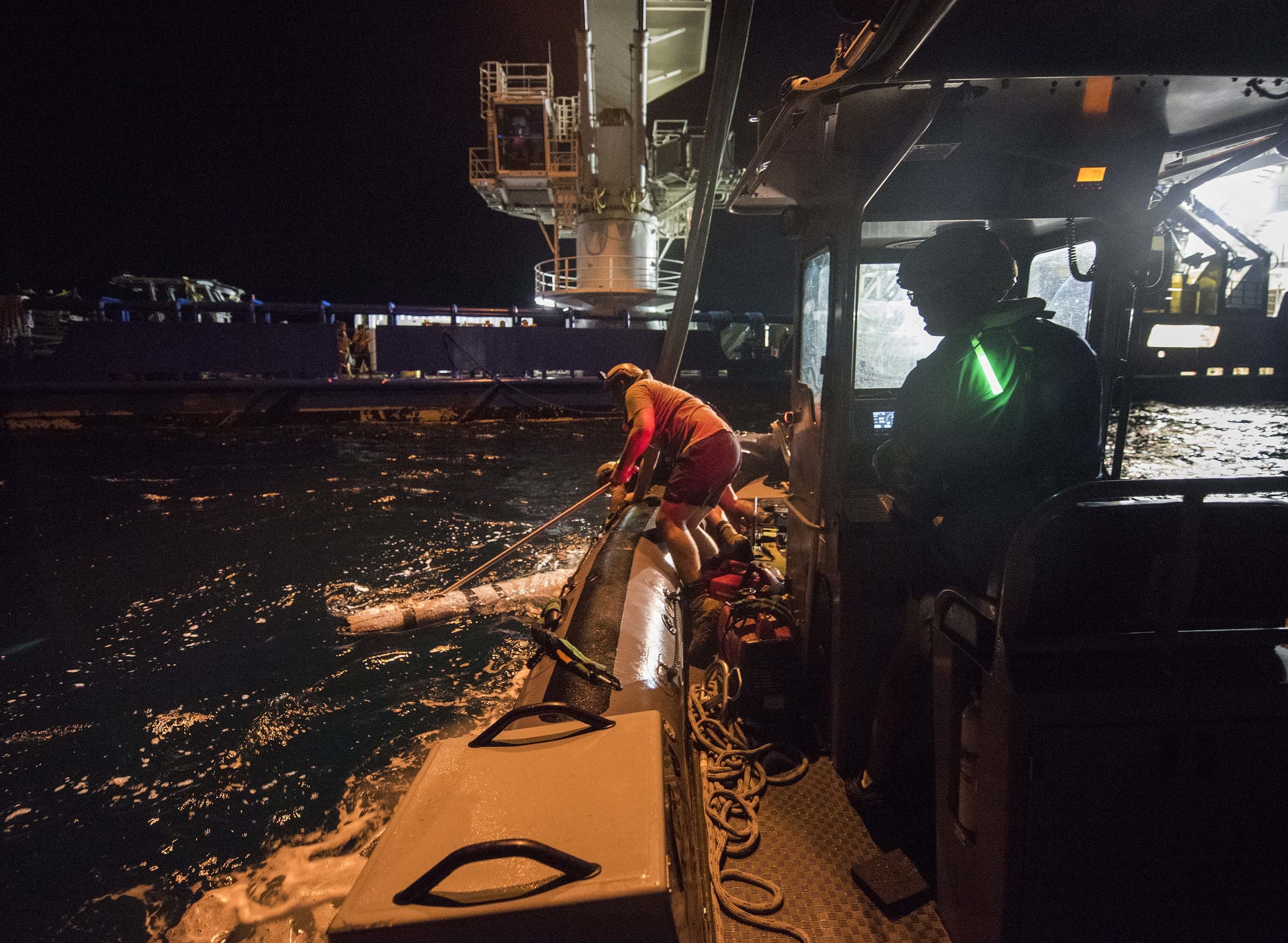
By the end of the calendar year, the bulk of the work should be done and a plan ready to present to Chief of Naval Operations Adm. John Richardson and Commandant of the Marine Corps Gen. Robert Neller.
Coffman said his definition of success on this effort would be “increased coherence to mine warfare and a so-called master plan. We’ll see what Adm. Richardson in the end, what he wants to do and how he wants to go with it, but my job is to get the work done between now and New Year’s and basically provide him some options.”



